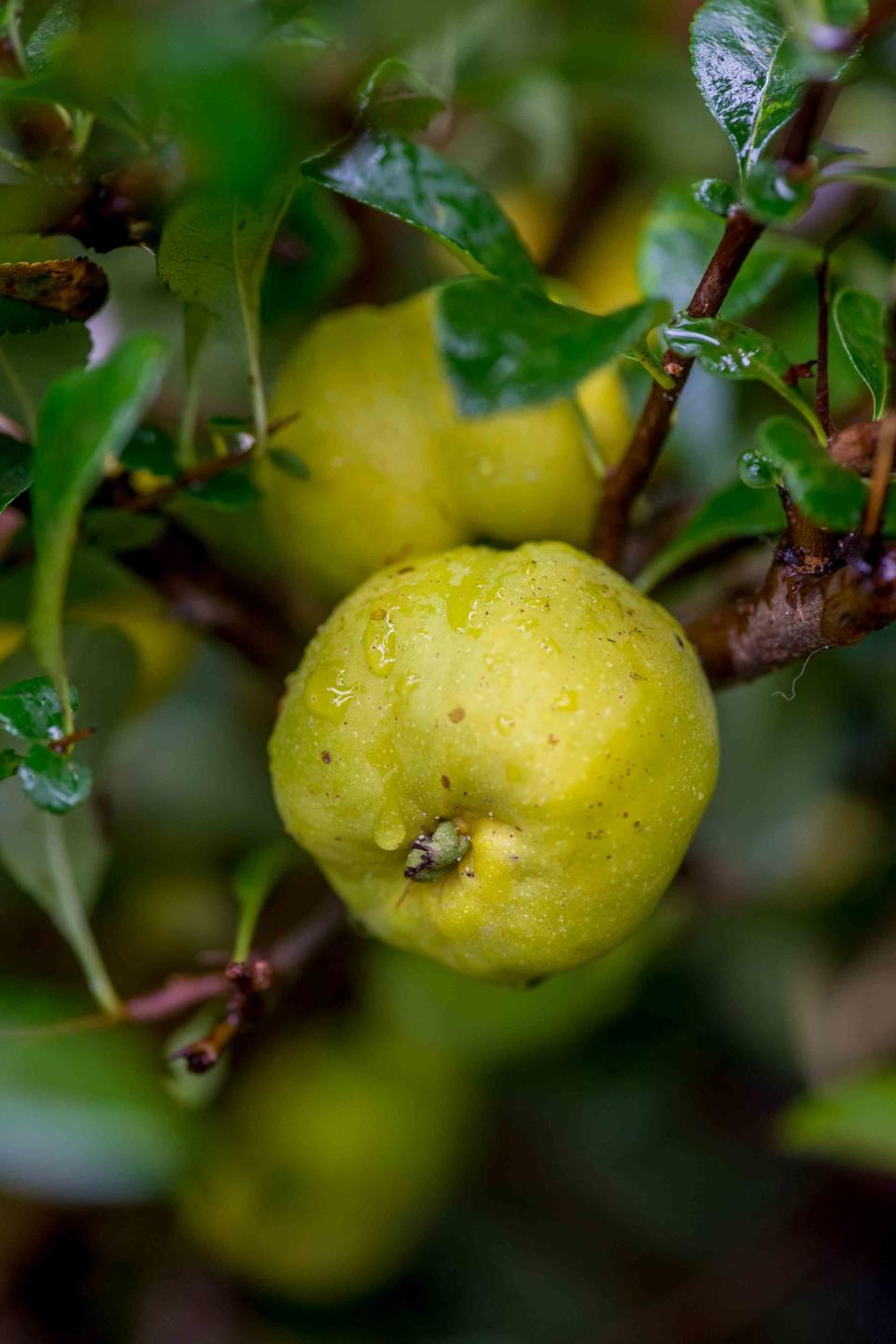How to Plant and Grow Quince Trees
Plant a quince tree for its beautiful spring blooms followed by tart fruits.

Rob Cardillo
Like its relatives, apples and pears, quince has been used for food and medicine for thousands of years. Native to Southwest Asia, common quince can be grown around the globe in temperate climates with warm summers and cool winters. It produces white or pink spring flowers, followed by generous amounts of fruit. However, unlike apples and pears, most quince cultivars produce hard, highly astringent fruit that require either advanced ripening or processing with heat to make them edible.
Quince can sometimes be confused with flowering quince (Chaenomeles speciosa), a completely different species that is native to East Asia and offers a wider range of flower colors including white, pink, salmon, and orange. Flowering quince blooms prior to fully leafing out in spring while edible quince will leaf out prior to blooming. The two can further be distinguished by the lack of thorns on edible quince trees.
Where to Plant Quince Trees
While quince are not large trees, they do need plenty of sunlight and ample space to bloom and fruit properly. Unlike apples, quince does not require a second tree for pollination but does produce higher yields when additional trees are present. Because of their beautiful spring flowers and patterned bark, quince can be planted ornamentally in much the same way as crabapple trees.
:
How and When to Plant a Quince Tree
Like most temperate fruit trees, quinces are usually planted in spring. However, healthy trees can be planted during any part of the growing season or even during dormancy owing to their hardiness.
Plant Care Tips for Quince Trees
Light
For the best possible flower and fruit production, full sun (8+ hours per day) should be given to quince trees. Some shading can be tolerated, but fewer flowers and fruit will be produced. Shaded trees are also more susceptible to diseases and leggy growth.
Soil and Water
Quince grows best in fertile, well-drained soil and may struggle in overly wet or waterlogged soils. Keep soils evenly moist while fruiting to avoid fruit drops.
Temperature and Humidity
Quinces are exceptionally hardy and tolerant of a wide variety of temperature extremes but do best in regions with warm summers and cool winters. High humidity is generally tolerated but may increase the risk of fungal diseases. Good air circulation and cleaning up of leaves around the base of trees will help to minimize the presence of spores.
Fertilizer
These fruiting trees don't need much fertilizer. The overuse of nitrogen can even increase the risk of disease by producing excessive, tender new growth. When necessary, a light feeding in early spring should be sufficient.
Pruning
Like its relatives, common quince tends to grow watersprouts and suckers around the base of the trees. Care should be taken to remove this weak growth so that it doesn't rob the main tree of nutrients or allow the rootstock wood to take over.
:
Pests and Problems
Like apples, pears, and crabapples, quince is susceptible to blight and rust disease. Infected trees can be treated with a copper fungicide while trees are dormant. All leaf debris and surrounding vegetation should be removed for good air circulation. Avoid planting quinces near junipers to avoid rust infections.
How to Propagate Quince Trees
While quinces can be grown from seed, to maintain cultivar quality, grafting is the best option. Grafting is usually done in spring and seedling and dwarf cultivars are used as rootstocks.
Frequently Asked Questions
Can edible quince fruit be eaten fresh?
<p>While normally not eaten fresh due to the astringency and tartness, over-ripe fruits and those that have been left on the tree after a frost, <a href="https://www.bhg.com/when-are-persimmons-ripe-6754974" data-component="link" data-source="inlineLink" data-type="internalLink" data-ordinal="1">similar to persimmons</a>, can be eaten fresh. <br/></p>
Are quince trees poisonous?
<p>Quince fruits, leaves, stems, and roots are not poisonous, but like their relatives, seeds do contain small amounts of compounds that produce a form of cyanide in the stomach.</p>
Can common quince be grown as a hedge?
<p>Yes! Plants grown on their own roots can be allowed to form suckers and <a href="https://www.bhg.com/gardening/trees-shrubs-vines/shrubs/best-plants-for-hedges/" data-component="link" data-source="inlineLink" data-type="internalLink" data-ordinal="1">produce thick hedges</a>, but are generally not ideal for producing fruit.</p>

